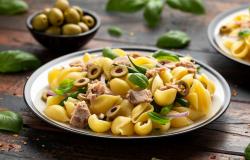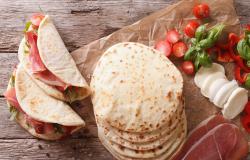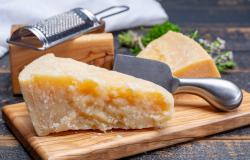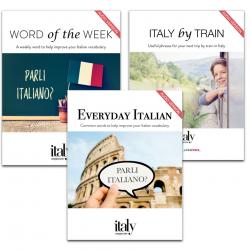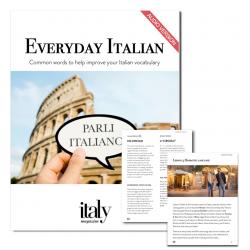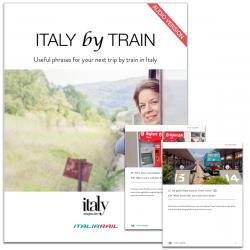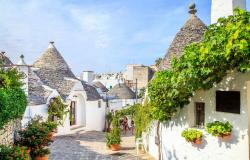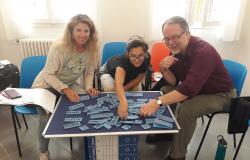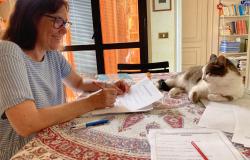12 Ways to Order Coffee in an Italian Café
ITA:
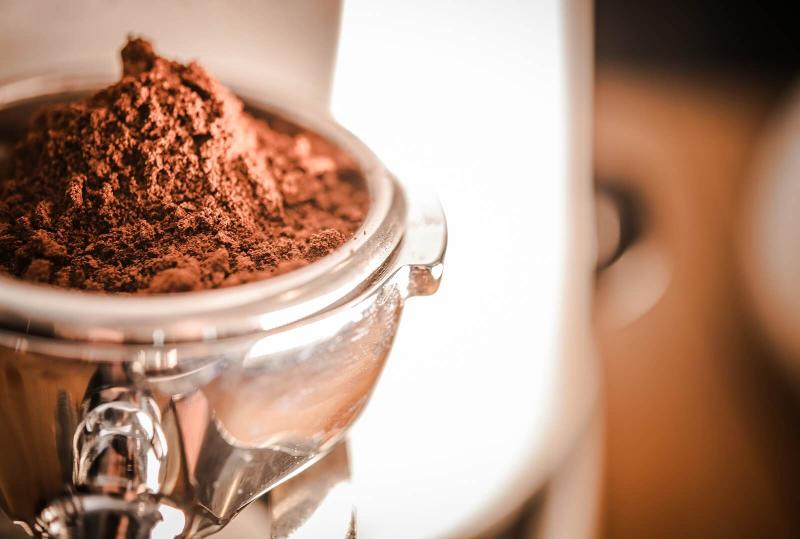
Use player to listen to Italian version
What are the most common coffee drinks Italians order at the café? They almost always involve espresso. Espresso is thicker than coffee brewed by other methods, and, as a result of the pressurized brewing process, the flavors are very concentrated, giving it the typical, unmistakable aroma. It also usually comes out with ‘crema’ on top (foam with a creamy consistency).
Here are the most common ways Italians order coffee at the ‘bar’ (Italian café). Try ordering in Italian!
Espresso
The classic way to drink coffee in Italy, and the simplest. A small amount of nearly boiling water is pressurized and shot through finely ground coffee beans with an espresso machine. Many Italians add a bit of sugar, but some prefer the bitter taste.
Macchiato (‘stained’ coffee)
This is also a very popular way to drink coffee in Italy: espresso with a dab of milk. This can be ‘caldo’ (warm) if the milk is heated, ‘freddo’ (cold) if the milk is added directly from the refrigerator.
Schiumato (foamed coffee)
Very similar to macchiato: the milk added to the espresso is whipped, like it’s done with cappuccino (but the milk is just a drop).
Cappuccino
Italians’ favorite coffee drink for breakfast! Espresso with steamed milk, prepared using the espresso machine steam wand; the top consists of milk foam, which can be decorated with drawings made with chocolate syrup.
Decaffeinato (decaffeinated coffee)
Those who want to enjoy the aroma of coffee, but don’t want the caffeine opt for decaffeinated coffee (a very small percentage of caffeine is present nevertheless).
Caffè lungo (long coffee)
Not to be confused with caffè doppio (see below), caffè lungo has a higher amount of water, so it is lighter.
Caffè ristretto (‘reduced’ coffee)
The opposite of caffè lungo, this has a small amount of water, and therefore the taste is strong and sharp.
Caffè doppio (double coffee)
Two coffee cups in one (two espresso shots), so the result is very strong and dense coffee.
Caffè con panna (coffee with cream)
Espresso with soft whipped cream on top – yum!
Caffè al ginseng (ginseng coffee)
Arabica bean coffee flavored with ginseng root extract, this is a beverage that arrived from Asia a decade ago and has become increasingly popular, although the taste is completely different from classic Italian coffee. It’s warm, milky and sweet; because it’s made with automatic machines, the taste vary from café to café. You order “un ginseng”.
Crema di caffè (coffee cream)
This is very popular in summer; it uses coffee, sugar and cream; it’s served cold and, being very creamy, it’s almost a dessert.
Caffè freddo or shakerato (iced coffee)
This is also a summer coffee drink. Coffee is prepared like a regular espresso, then put into a cocktail shaker with ice and shaken to chill it quickly, then strained into a glass (usually a martini glass) without the ice. The barista will ask if you want it ‘zuccherato’, with sugar, because the sugar is added into the shaker, not at the end.
Quali sono le bevande di caffè più comuni che gli italiani ordinano al bar? Quasi sempre hanno a che fare con l'espresso. L'espresso è più denso del caffè preparato con altri metodi e, a seguito del processo di percolazione sotto alta pressione di acqua calda, il sapore è molto concentrato, conferendogli quell'aroma tipico e inconfondibile. Di solito ha una ‘cremina’ in cima (schiuma con consistenza cremosa).
Ecco le varianti più comuni secondo cui gli italiani ordinano il caffè al bar. Prova ad ordinarlo in italiano!
Espresso
Il modo classico di bere il caffè in Italia e il più semplice. Una piccola quantità di acqua sul punto di ebollizione viene pressurizzata e fatta passare attraverso chicchi di caffè macinati finemente con una macchina per caffè espresso. Molti italiani aggiungono un po' di zucchero, ma alcuni preferiscono il gusto amaro.
Macchiato
Un altro modo comune di bere il caffè in Italia: caffè espresso con una piccolissima quantità di latte. Questo può essere caldo se il latte è riscaldato, freddo se aggiunto direttamente dal frigorifero.
Schiumato
Molto simile al macchiato: il latte aggiunto all'espresso è montato, come si fa con il cappuccino (ma la quantità di latte è minima).
Cappuccino
La bevanda di caffè preferita dagli italiani a colazione! Espresso con latte caldo, preparato utilizzando la leva del vapore della macchina espresso; la parte superiore è costituita da schiuma di latte, che può essere decorata con disegni fatti con cioccolato fuso.
Decaffeinato
Coloro che vogliono gustarsi l'aroma del caffè, ma non vogliono la caffeina optano per il caffè decaffeinato (una percentuale molto piccola di caffeina è comunque presente).
Caffè lungo
Non deve essere confuso con il caffè doppio (vedi sotto), il caffè lungo ha una maggiore quantità di acqua, quindi è più leggero.
Caffè ristretto
L'opposto del caffè lungo, ha una piccola quantità d'acqua, e quindi il gusto è forte e deciso.
Caffè doppio
Due tazze di caffè in una (due ‘shottini’ di caffè espresso), il risultato è un caffè molto forte e denso.
Caffè con panna
Espresso con morbida panna montata in cima – una golosità!
Caffè al ginseng
Caffè aromatizzato con estratto di radice di ginseng; questa bevanda è arrivata dall'Asia dieci anni fa ed è diventata sempre più popolare, anche se il gusto è completamente diverso dal classico caffè italiano. È caldo, cremoso e dolce; poiché è fatto con macchine automatiche, il gusto varia da bar a bar. Si ordina "un ginseng".
Crema di caffè
Molto richiesto in estate; fatto con caffè, zucchero e crema, è servito freddo e, essendo molto cremoso, è quasi un dessert.
Caffè freddo o shakerato
Anche il caffè freddo è tipico dell’estate. Il caffè è preparato come un normale espresso, poi messo in uno shaker con ghiaccio e shakerato per farlo raffreddare velocemente, poi filtrato in un bicchiere (di solito un bicchiere da martini) senza ghiaccio. Il barista ti chiederà se lo vuoi 'zuccherato', perché lo zucchero è aggiunto nello shaker, non alla fine.
